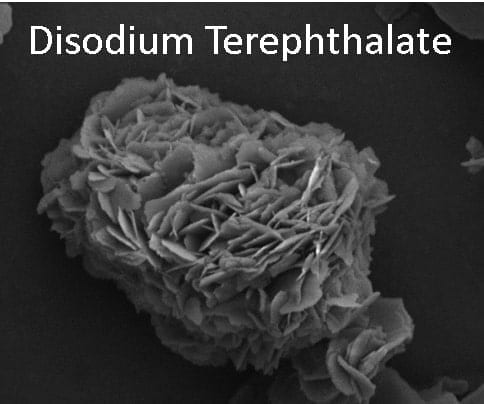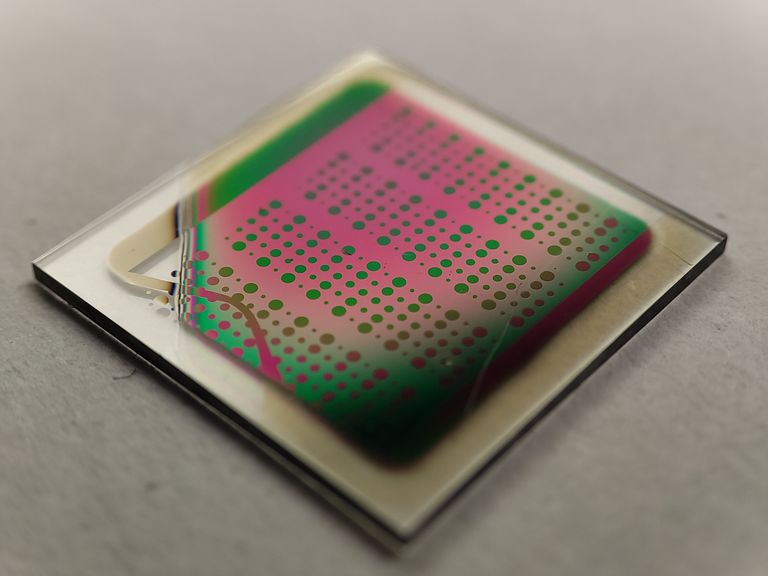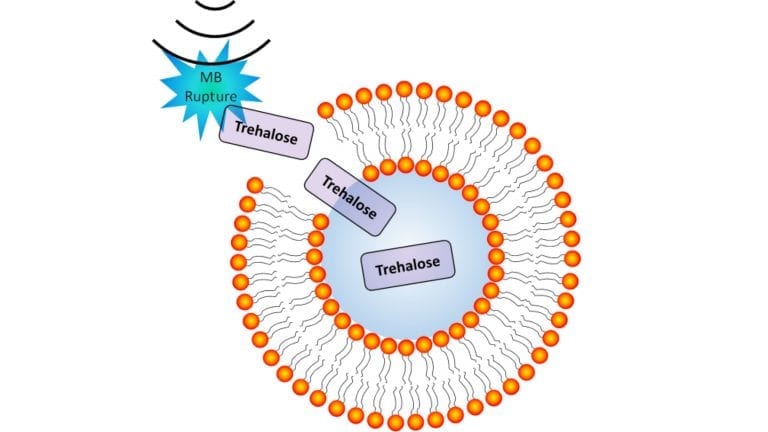This image shows disodium terephthalate flowers produced from polyethylene terephthalate via microwave processing in two minutes
New battery technology involving microwaves may provide an avenue for renewable energy conversion and storage.
Purdue University researchers created a technique to turn waste polyethylene terephthalate, one of the most recyclable polymers, into components of batteries.
“We use an ultrafast microwave irradiation process to turn PET, or polyethylene terephthalate, flakes into disodium terephthalate, and use that as battery anode material,” said Vilas Pol, a Purdue associate professor of chemical engineering who has worked with the Purdue Research Foundation Office of Technology Commercialization to develop several battery technologies. “We are helping to address the growth in the proliferation of renewable energy conversion and storage, which stems from the societal attention and increasing awareness of climate change and energy resource limitation.”
The Purdue team tried the approach with both lithium-ion and sodium-ion battery cells. They worked with researchers from the Indian Institute of Technology and Tufts University. The battery technology is presented in the journal ACS Sustainable Chemistry & Engineering.
Pol said that while lithium-ion technology is currently dominating both the portable electronics and electric vehicles market, sodium-ion battery research also has gained significant attention due to its low cost and appealing electrochemical performance in grid applications.
“The applicability of the microwave technique on organic reactions has gained attention in recent times due to its advantage of the rapid reaction process,” Pol said. “We have accomplished the complete conversion of PET to disodium terephthalate within 120 seconds, in a typical household microwave setup.”
Pol said the materials used in the Purdue technology are low-cost, sustainable and recyclable.
For more information on licensing and other opportunities with Pol’s battery technologies, contact OTC at [email protected].
The Latest Updates from Bing News & Google News
Go deeper with Bing News on:
New battery technology
- Daimler Buses and battery systems expert BMZ Poland partner for next-gen electric bus batteries
Daimler Buses and battery systems expert BMZ Poland, a key entity in the BMZ Holding group, have entered into a strategic partnership for the development and supply of the next generation of electric ...
- Engineers develop innovative battery technology that could change the future of remote devices: 'An integrated device that could harvest ambient thermal energy'
With simple increases and decreases in temperature, the new battery can generate enough charge for practical applications in many industries. Engineers develop innovative battery technology that could ...
- Electric Cars Refuel in Minutes? New Battery Makes Long Road Trips a Breeze
A Chinese company called CATL announced a new battery technology for electric cars at the Beijing Auto Show. This new battery is a major leap forward in charging speed and driving range. CATL’s ...
- A new button battery dyes kids’ mouths blue if swallowed
Energizer has designed a new lithium coin battery that releases a blue dye immediately upon interacting with moisture such as saliva. The marker offers parents a visible way to determine if their ...
- Think Microgrids Are Too Complicated? Schneider Takes on the Problem with a New Battery as its Latest Step
Schneider Electric previewed a new battery energy storage system (BESS) at the Microgrid Knowledge conference that aims to make microgrids easier for those who lack ...
Go deeper with Google Headlines on:
New battery technology
[google_news title=”” keyword=”new battery technology” num_posts=”5″ blurb_length=”0″ show_thumb=”left”]
Go deeper with Bing News on:
Renewable energy conversion and storage
- Schneider Electric Releases All-In-One Battery Energy Storage System for Microgrids
Schneider Electric today announced a Battery Energy Storage ... services, renewable self-consumption, decarbonization of electrical energy, and variable generation smoothing. Comprised of a battery ...
- A flexible and efficient DC power converter for sustainable-energy microgrids
A new DC-DC power converter is superior to previous designs and paves the way for more efficient, reliable and sustainable energy storage and conversion solutions. The Kobe University development can ...
- Energy Storage
As renewable energy capacity increases on power grids, battery energy storage systems become more and more important. While lead battery technology is not new, it is evolving. Advanced lead ...
- Renewable Energy News
Apr. 17, 2024 — Wind power is a source of energy that is both affordable and renewable ... that can achieve a certified world-record power conversion efficiency of 27.1 per cent across a ...
- Long-Duration Energy Storage Is Core To Tripling Renewables By 2030
“As we increase renewable energy integration, we will need more than four hours of storage capacity,” says Julia Souder, chief executive of the Long Duration Energy Storage Council, in an ...
Go deeper with Google Headlines on:
Renewable energy conversion and storage
[google_news title=”” keyword=”renewable energy conversion and storage” num_posts=”5″ blurb_length=”0″ show_thumb=”left”]











